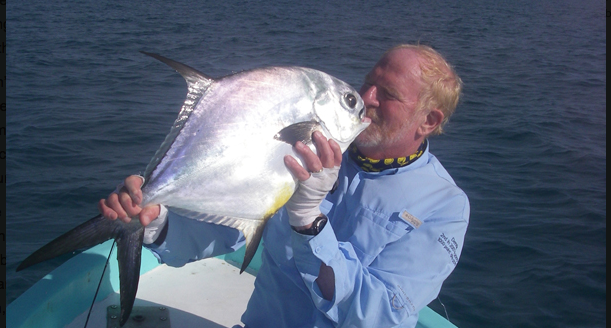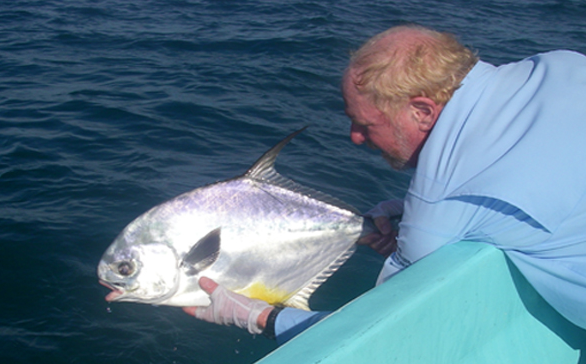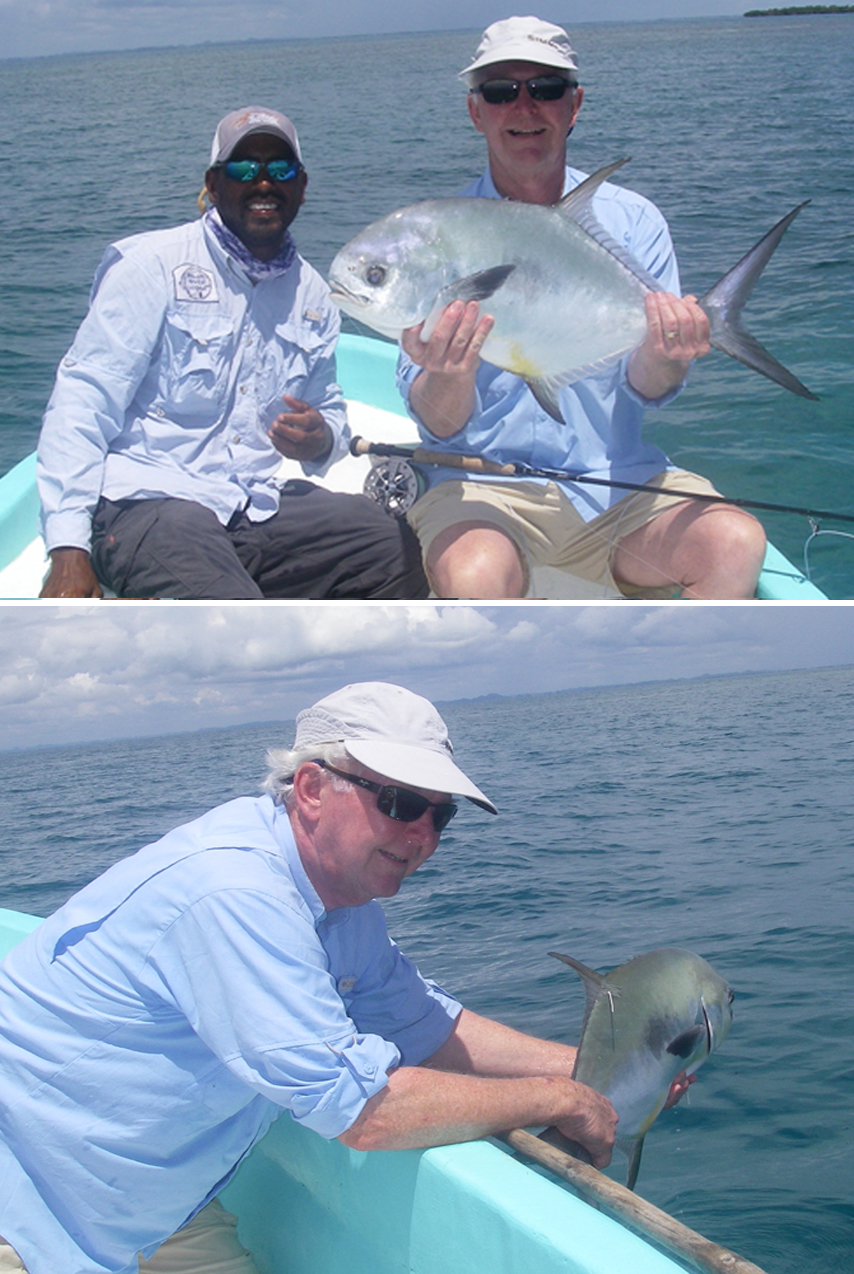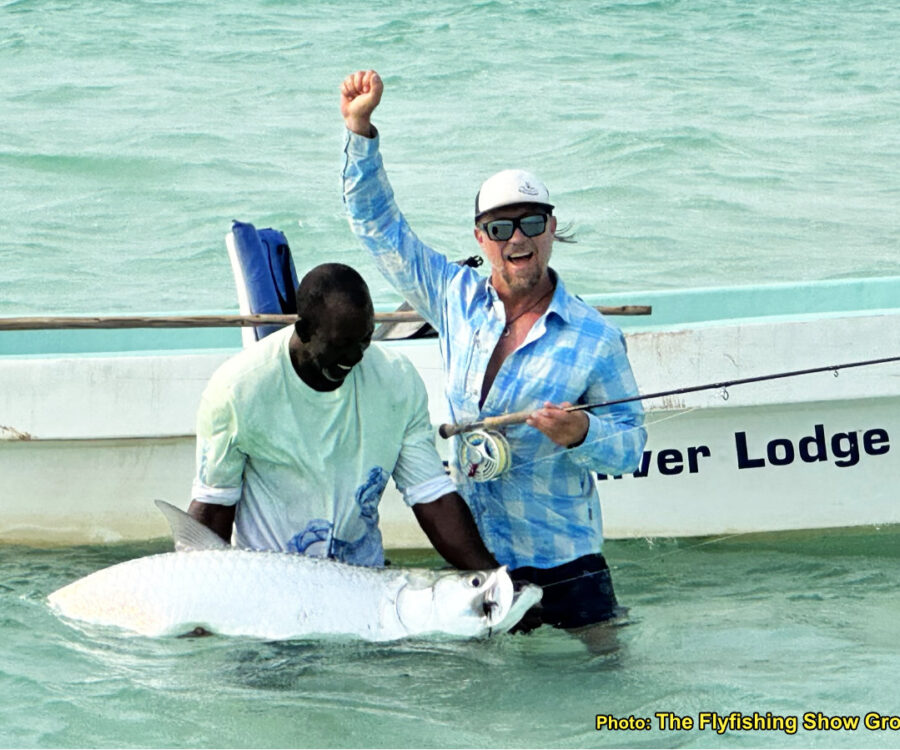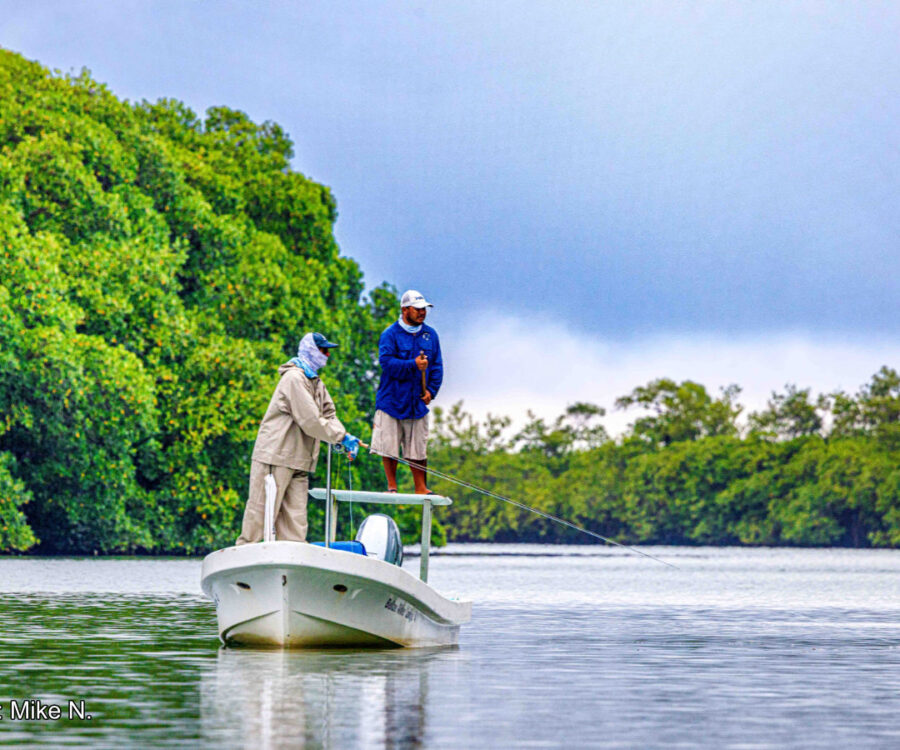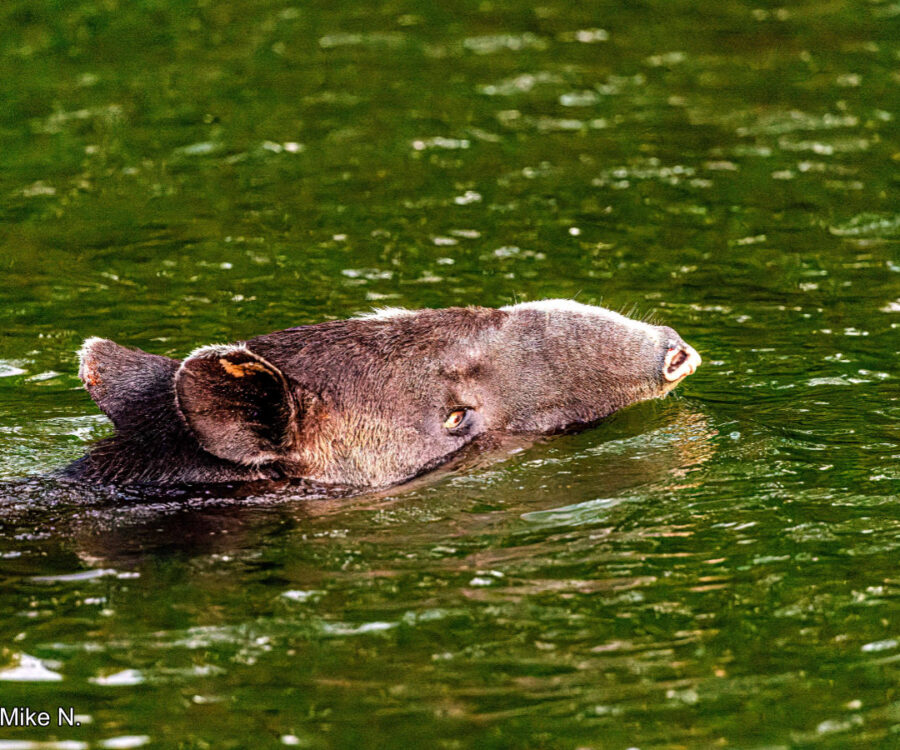For those not chummy with saltwater gamefish, a permit is a roundish silvery fish with a giant eye and thick rubbery lips. It is best identified by its prominent black dorsal fin and pointed tail tips. In tropical waters permit occupy coral reefs, old wrecks and occasionally the shallows surrounding South Florida and the Caribbean. They can also be found in portions of the Indian Ocean and reefy waters in tropical portions of Australia.
Other fish in the jack family such as the pompano and palometa resemble the permit but can’t replicate its spookiness in shallow water.
Permit present a variety of anomalies. The first is that in deeper water they mass in schools and are suckers for any sort of chumming and crabby-appearing natural baits, artificial jigs and fly patterns of bristly pinkish pipe cleaners. That’s comparable to visiting a fish farm! Never admit to elitist friends a word about catching a permit on fly from a wreck – if you value maintaining respectable social status.
Some permit cruise into shallower territory such as tidally washed sand and coral flats and mosey across endless waist-deep turtle grass banks. They remind me of a group of well-fueled fraternity boys out on Saturday night patrolling for their favorite recreation, gobbling small crabs. These permit dart around crazily, sometimes proceeding quickly in small schools or as singles and pairs – working the flats methodically. They can also float lazily on the surface of deeper channels.
Like fishy backhoes, permit tail as they nose into the bottom, allowing the sickle-like black tail tips to wave, further reflecting the splendid calm of the shallows. Talk about buck fever? A suddenly tailing permit can immediately ice even the most experienced. For years I couldn’t understand why I became dizzy when among cruising and tailing permit. I finally learned to notify myself to breathe lest I end upholding a breath for minutes on end.
Mastering the permit doesn’t happen overnight. One whose unselfish permit dedication might frame a comfortable 401(k) retirement plan is Dr. Dennis Butcher, St. John’s Medical Center internist and One-Fly Environmental Foundation honcho.
Dennis began chasing the glamour flats species – bonefish, barracuda, tarpon and permit – with some of the Florida Keys’ best backcountry guides. The quest extended to the Bahamas with promises to his understanding wife, Marian, of relaxing scuba-diving vacations that might mimic bonefish and permit outings. Being early investors in former Jackson-based Tarponwear Clothing logically demanded that the Butchers explore new Central American flats, principally in Belize.
Sadly repeated outcomes played the same: “I was this close” or “The leader broke on my strike.” Sometimes it was “A tarpon grabbed my crab fly” or “Blame my ineffective ‘trout’ strike.” Other excuses were a host of broken rods, “just a tiny nick in my tippet” and, of course, “A barracuda snipped the fly as a permit was charging it!”
Dennis promised 2014 would be different. And with the help of loyal One Fly Event supporters Mike, Marguerite, Misha and Dirk, who host the memorable jungle-surrounded Belize River Lodge, it would
be.
Late May found Dennis and Marian investigating various parts of Belize, the country formerly known as British Honduras. This included diving along the world’s second longest barrier reef, some fishing and outer island sightseeing before joining Bob and Sandra Williamson at Long Caye, a secluded new Belize River Lodge property in the midst of Permit Central.
Naturally, no Butcher expedition would be complete without a few hiccups, such as a 30-hour delay in the arrival of checked luggage after its detour to Buenos Aires, a broken fly line and a new 8-weight flyrod “crumbling like a dry peanut butter cookie.” The Williamsons are Hoback regulars when not in their home base of Shreveport, where Bob masquerades as a Louisiana oil and gas operator, a cover for his serious fly fishing addiction.



